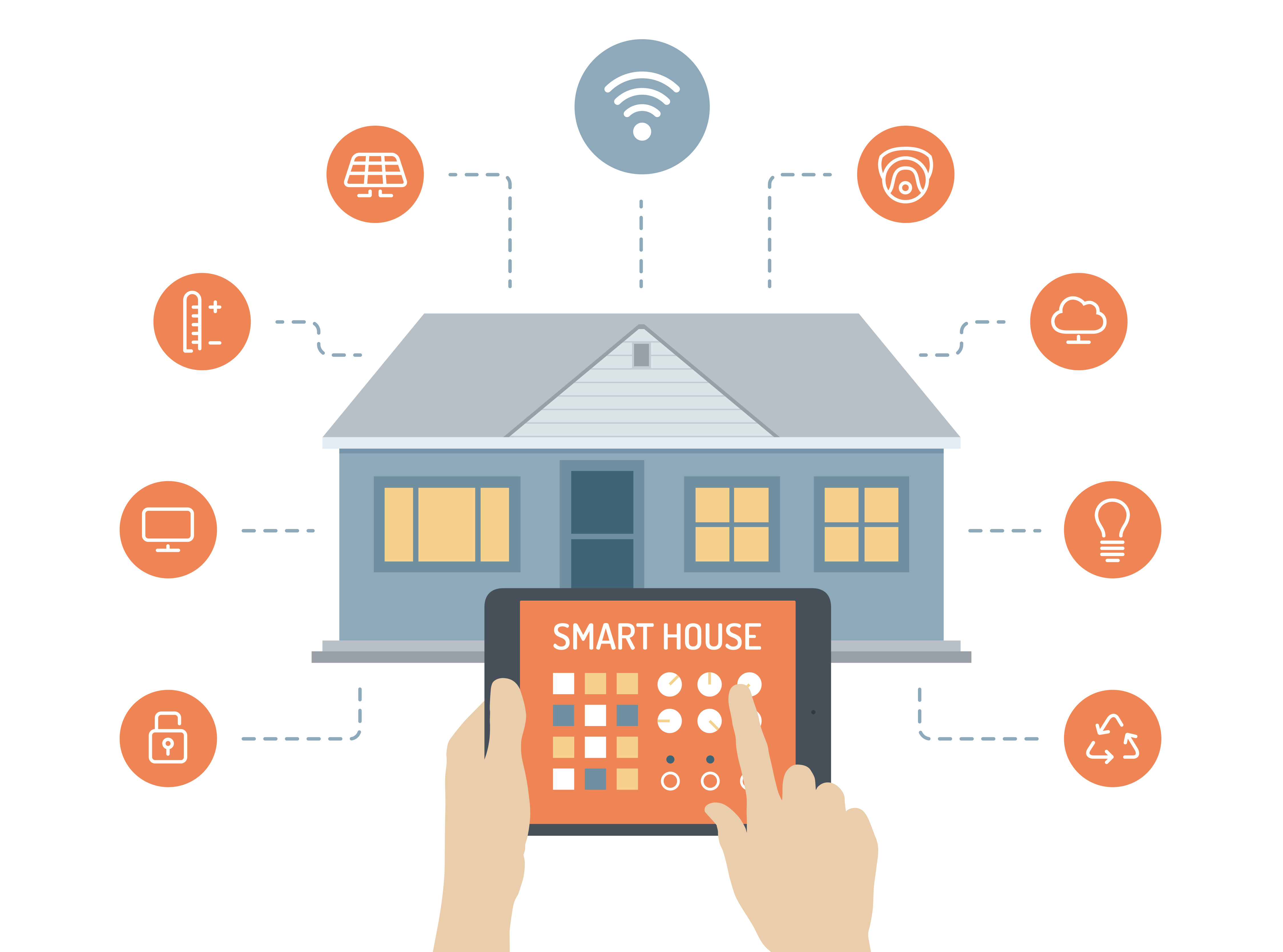 By Austin Good | Sustainable Building Associate
By Austin Good | Sustainable Building Associate
It’s no secret technology has made great advancements over the past couple decades. It was only 8 years ago that Apple introduced the iPhone which kick-started the mobile computing revolution. Now, only a few years later, mobile technology is ubiquitous. Just as the rise of mobile computing occurred so quickly we are beginning to see technical advances make their way into the DNA of our built environment. Buildings and systems are being outfitted with sensors and computers allowing them to make their own calculated decisions based on the surrounding environment.
 Smart buildings support sustainable behavior.
Smart buildings support sustainable behavior.
People are becoming more aware and more in control of the built environment through real time information about everything from energy use to bus schedules. The USGBC recently came out with their LEED Dynamic Plaque which shows building occupants updated information about a building’s energy and water use along with other metrics in an attractive easy to read display. Technology like this helps people see buildings as real time systems, with real time benefits and consequences associated with how the building is used. As real time building metrics develop, maybe these dynamic displays will show more than just a building’s environmental impact, they could also display metrics for another building down the street, entire block, or a city creating friendly competitions around reducing resource use. In the future, every home could be outfitted with dynamic information measurements, allowing homeowners to monitor their resource consumption in real time.
Smart buildings can diagnose and fix problems real-time.
Using smart building data to support good behavior is one piece of the puzzle, but another important one that this technology enables is the ability for our buildings and their systems to troubleshoot issues in real time, quickly solving problems and saving resources. A great example are the new thermostats like Nest that enable better control over a buildings heating and cooling. Not only are these thermostats easy to install in existing buildings, but because they are connected they are adaptable. Nest, a leader in the smart thermostat field, recently pushed out an automatic software update to existing Nest thermostats that included energy efficiency improvements. This software update enables these smart thermostats to more efficiently control a home’s temperature by taking into account more factors, like weather, how drafty your home is, and what your personal schedule is like. This software update, that happened overnight for thousands of users, increased home energy efficiency gains of between 3.8-6.5 percent. Imagine if every building was outfitted with a smart thermostat and all of our cities saw those gains overnight.
Smart buildings learn.
Because of integrated, connected software, smart building systems can continually evolve and learn, allowing them to be more efficient without waiting for consumer to adopt the next generation technology. Instead of having to wait to buy an entirely new car to gain efficiency, software updates can enable us to make gains using what we already have. Sure, there will still be need for physical improvements to technology, but software updates may enable us to use products and systems for longer, extending product cycles.
These examples only scratch the surface. In a time where we desperately need to reduce our resource use these advances are critical. 30 years ago, no one could have predicted the technological advancements that we have made. As we continue to develop a connected world it’s exciting to imagine what lies ahead in the next 30 years.
